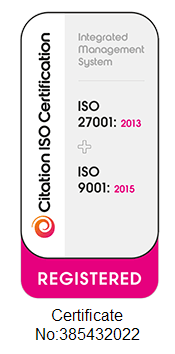We know that debt can be scary, but it doesn’t need to be. Getting to know how debt works is the best way to overcome your fears and start looking at it in a new light. Part of the success of being able to turn your life around and regain financial freedom lies in understanding exactly what debt means.
By improving your understanding of debt, you’ll not only be more knowledgeable about your situation, but you’ll also learn how to manage your money and repay what you owe in the way that is most suitable for you.
Many people assume that all debt is the same and that all debt should be approached in the same way. This statement couldn’t be further from the truth. The way in which debt is accrued and repaid varies on what kind of debt it is. Let’s take a look at the different types of debt to help you understand your debt a bit more clearly.
Types of debt
Secured debt
A secured debt is taken out against the value of the asset you are purchasing or an asset you already own, such as a house or car. If you do not pay off the debt, your asset may be taken by the creditor as payment. Secured debts do not spiral in the same way as unsecured debts, but they can risk the loss of property and possessions if not handled correctly. Secured debts include:
- Mortgages
- Car financing
- Secured personal loans
Unsecured debt
Unsecured debt is the most common kind of debt. Unsecured means that your debt is not guaranteed against anything — such as a valuable asset like your home — should you fail to pay. Instead, the debt is managed exclusively through payment contracts. If you fail to pay off unsecured debts, your creditors will have to undergo legal proceedings if they want to take action against you.
Unsecured debt has a habit of spiralling out of control because, as the debt continues to go unpaid, the amount owed can increase dramatically with interest. Unsecured debts include:
- Credit cards
- Personal loans
- Overdrafts
- Payday loans
- Medical bills
- Student loans, though these are treated differently to other types of debt.
If you are struggling with bad debt we recommend making a list of all the debts you owe, including both the total amount and the minimum monthly repayments. This can be a scary process, but moving towards a financially free future starts with a single step. Using what you’ve learned above, see if you can sort your debts into ‘secured debts’ and ‘unsecured debts’. After you’ve done this, you will then need to prioritise your debt repayments – for more information on how to prioritise your debt read our guide explaining which debts you should repay first.
At Debt Movement we provide professional debt guidance and solutions that help you move out of debt. We offer non-judgemental financial guidance to relieve the burden of financial strain and offer support on your journey to financial freedom. Request a free call back today.













